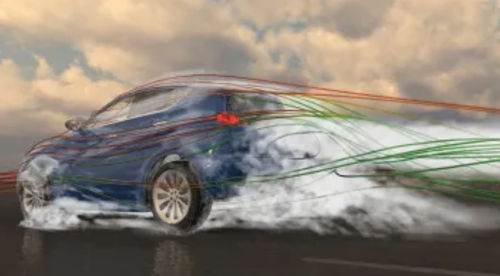
Simulation software Aerodynamics Simulationdesigndevelopmentprocess




Add to favorites
Compare this product
Characteristics
- Function
- development, simulation, design
- Applications
- process, industrial, for the automotive industry, for the aerospace industry, fuel
Description
Aerodynamics design starts from the earliest stages of development, but it is affected by both large structures and tiny details that change right through the process. Integrating simulation into design allows engineers to optimize the performance of their product and resolve potential issues without the cost of wind tunnel testing.
Industry Challenges Solved by Aerodynamics Simulation
Aerodynamics is a crucial concern across a wide range of industries. The automotive industry was a pioneer in the field, using the understanding of how air flows around vehicles to reduce drag to produce faster cars with better fuel economy. It is also a self-evident requirement in the aerospace industry, especially as high fuel costs and tightening emissions regulations mean that even the smallest reduction in drag is worthwhile. Even large fixed structures such as buildings and industrial equipment can benefit from aerodynamic design to reduce wind load and improve airflow.
Supplementing wind tunnel testing with simulation reduces costs by replacing physical prototypes with a virtual twin. It also represents a significant time saving, as tests that can take weeks to prepare physically can be replicated in simulation with an overnight turnaround. Allowing designers to analyze aerodynamic performance from the very start reduces the time and cost associated with fixing issues later. Simulation fosters innovation by allowing users to experiment with new concepts that can improve performance and offer a competitive edge.
Catalogs
No catalogs are available for this product.
See all of SIMULIA‘s catalogsRelated Searches
- Automation software solution
- Management software solution
- SIMULIA analysis software
- SIMULIA process software
- SIMULIA CAD software
- Control software solution
- Online software
- Real-time software solution
- SIMULIA design software
- SIMULIA 3D software
- Measurement software
- SIMULIA interface software
- SIMULIA industrial software
- SIMULIA quality software
- SIMULIA simulation software
- Visualization software solution
- Automated software
- SIMULIA development software
- Network software solution
- Machine software
*Prices are pre-tax. They exclude delivery charges and customs duties and do not include additional charges for installation or activation options. Prices are indicative only and may vary by country, with changes to the cost of raw materials and exchange rates.









